VENICE DURING THE BIENNALE
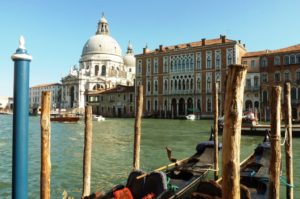
We revisited Venice a few weeks ago for the first time since COVID shut down the world for travellers. Venice has been one of our top favourite cities for many decades, and this was to be our 4th Biennale, so we were interested to see what changes had occurred to La Serenissima since our last visit. Would it still be magical, or a crowded nightmare now that the world has re-opened for travel? We were keen to find out.
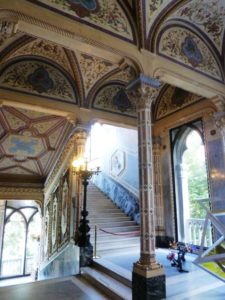
If you like your art to be utterly contemporary, baffling, confronting, sometimes beautiful, often impenetrable, yet always thought-provoking and stimulating, then a visit to the Venice Biennale should definitely be on your agenda. One of the major attractions during the Biennale is that so many venues are open to the public that otherwise one would never have an opportunity, or excuse, to visit. These so-called off-site venues range from private palazzi and gardens to business premises. Many of these are hidden behind high walls that reveal little to the passer-by, or in areas of the city that would be otherwise off the Venice itinerary at any other time.
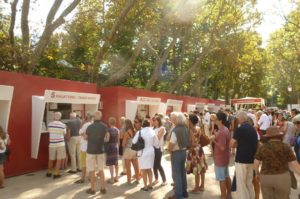
The Venice Biennale has often been described as the Olympics of the art world, and can be quite an exhausting experience, as there’s so much to see and experience. There are two main venues, the Giardini di Castello and the Arsenale, as well as countless offsite venues, official and unofficial. This year, there were 213 artists from 58 countries. There were 29 country pavilions in the Giardini and the historic naval shipyard, the Arsenale, as well as in churches, palazzi and shops.
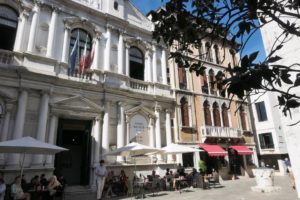
As well as the art exhibitions, there are lots of special concerts and exhibitions during a Biennale that aren’t directly related to it. Various Venetian churches offer concert programs throughout the year, but during a Biennale, there are so many more of these. They’re great ways to experience the often magnificent acoustics that these soaring spaces offer.
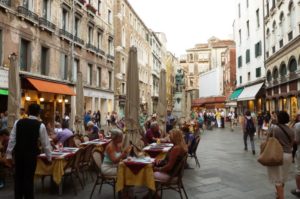
The downside of course is that the narrow, pedestrian pathways of Venice are even more crowded than usual, restaurants are often packed, and it goes without saying that hotel prices are higher. Post-COVID, these issues are even more pronounced when the Venice Film Festival’s dates coincide with the Biennale. All this is true, but the vibrant, festive atmosphere throughout the city at this time makes these negatives fade away. The city positively sparkles with all the attention lavished on it. As you venture out and about across the city, it seems as though there’s something to pique one’s interest or delight the eye during this special time devoted to the arts.
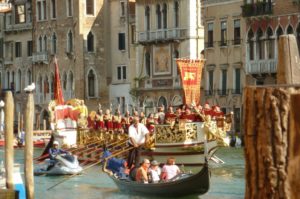
One of the most important events on the Venetian calendar is the annual Regata Storica held on the first Sunday in September, and it’s an extra-special treat when it occurs during the Biennale year. The first record of the regatta dates back to the mid-13th century, and is now the main event in the annual “Voga alla Veneta” rowing calendar.
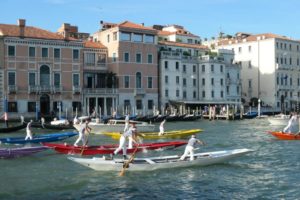
This unique sport has been practiced in the Venetian lagoon for thousands of years, and today it is particularly well-known for the spectacular Regata Storica water pageant that precedes the race.
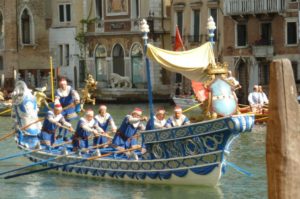
Primarily, it’s an event held by and for the local Venetian people to celebrate the history of Venice, but those visitors lucky enough to be there on this day will surely never forget the spectacle and the atmosphere of anticipation and excitement.
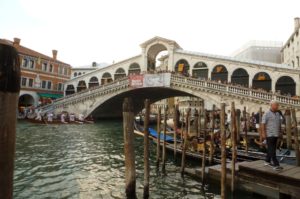
Every possible vantage point along the route on the Grand Canal is jammed packed with people, cheering and clapping at the sight of the gorgeously decked out historic boats, and the magnificent costumes of those on board. If you’re headed to Venice in the month of September, mark this event on your Must See list.
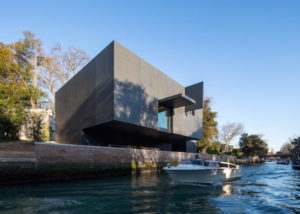
The Biennale has a prize, or prizes, called the Golden Lion, that are awarded to exhibiting artists. This year, 90% of exhibitors in the main exhibition were females, and the top honours went to American artists Simone Leigh for her brilliant sculpture, and Sonia Boyce’s UK pavilion. Each Biennale has a theme, and this year’s was The Milk of Dreams, after the writings of surrealist Leonora Carrington.
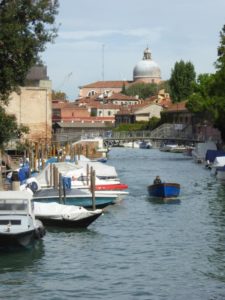
The exhibition examined the issues of a world struck by the aftermath of the global pandemic, the war in Ukraine, and the now terrifyingly close point of no return in climate change.
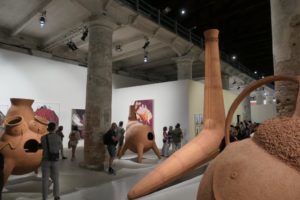
213 artists from 80 countries participated in this year’s Biennale, and a number of countries took part for the first time this year: The Republic of Cameroun, Namibia, Nepal, and the Sultanate of Oman. The Republics of Kazakhstan, Kirghizstan and Uzbekistan participated for the first time with their own pavilion.
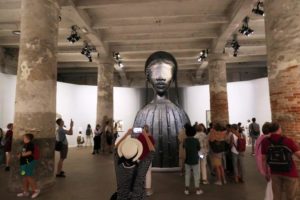
The diversity of participating countries ranged from Iceland to Africa, Cuba to Switzerland, Australia of course, and anywhere in between. From such a huge number of exhibitions, it’s difficult to choose highlights, but some of the most memorable included the pavilion of the USA in the Giardini which showed Simone Leigh’s sculptures depicting black woman whose traditions “have been left out of the archive or left out of history.” Standing at the centre of the outdoor forecourt was ‘Satellite’, a 7.30m high sculpture that was intended to recall the art of the Baga people of the Guinea coast.
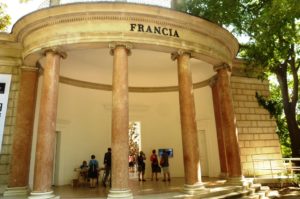
In the Giardini: Sonia Boyce was the first black woman to represent Great Britain. Her colourful videos featured 5 musicians who improvised, interacted and played with their voices. French Algerian artist Zineb Sedira represented France with an immersive installation featuring film, sculpture, photography and collage punctuated with live tango performances in a 1960s style bar. In an historic first, the Nordic Pavilion became the Sámi Pavilion, showing the work of 3 indigenous artists whose nation extends across the Nordic countries and into the Kola Peninsula in Russia.
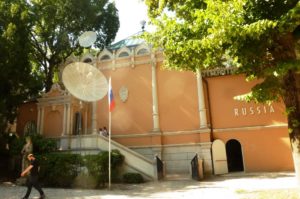
Three artists pulled out of representing Russia at this year’s Biennale as they opposed the invasion of Ukraine. Their decision meant that there was no official Russian representation this year. Regular performances protesting the Russian aggression took place outside the Russian pavilion.
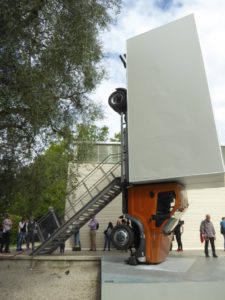
Nearby, a new open-air exhibition space called Piazza Ucraina, showed a Ukrainian installation that symbolised strength and resilience: a wooden pavilion burned to strengthen the wood and a stack of sandbags used to protect public art and monuments.
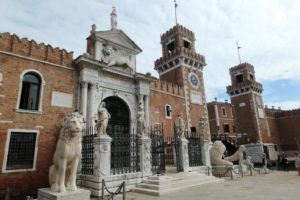
Dating back to the 13th century, the Arsenale is regarded as the largest pre-industrial ‘production centre’ in the world. It covers 46 hectares and once had more than 2,000 workers on site every day.
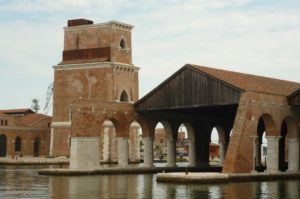
The fleets of ships owned by la Serenissima were built here, and the shipyards, depots and workshops were a symbol of the economic and political power of the city. As Venice lost its military importance, the Arsenale became more and more commercially focussed, yet today still remains a base for the Italian navy.
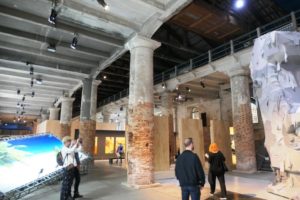
Since 1999, about 50,000 sq.m., of which 25,000 sq. m. is indoor space, have become exhibition spaces and activities devoted to the Biennale at the Arsenale. Since the end of 2010, there have been agreements between the Biennale organisers and individual countries for the establishment and use of permanent pavilions within the Arsenale complex in exchange for contributions to the buildings’ renovation costs. Nevertheless, the many exhibition spaces have retained their rustic historic character.
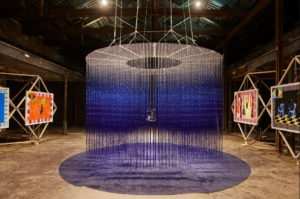
Ghana’s 2nd appearance at this year’s Biennale was as spectacular as their 2019 show. The large scale installations by 3 artists featured the Black Stair that symbolises the country, is shown on its flag and is linked with the national football team, and regarded as the most important monument in the country.

A first-time participant at the Venice Biennale, Uganda was recognised for its vision, ambition and dedication to art and working in their country. Their pavilion featured works that received a special mention for their demonstration of sustainability as an actionable practice, not simply a trend, a policy or a passing idea.
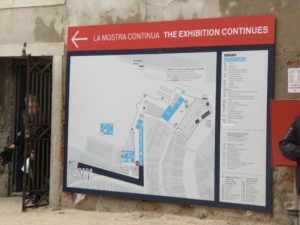
Precious Okoyomon, whose work See the Earth Before the End of the World, closed off the main, tunnel-like space at the Arsenale, a former rope-making facility. She had a living garden that was planted with the Japanese Kudzu plant—a perennial vine introduced into the USA that became invasive –whose steady spread was quickly declared illegal. A living, breathing work of art.
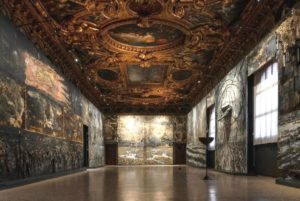
There were 24 shows to see in Venice beyond the Biennale. We particularly noted the Peggy Guggenheim Collection which had “Surrealism and Magic: Enchanted Modernity”, which was a joint project with the Museum Barberini in Potsdam, Germany; “Georg Baselitz: Archinto” at Museo di Palazzo Grimani, and the Anselm Kiefer show at the Doge’s Palace. This was regarded by many as the most exciting art installation in Venice. Walking to the gallery where Kiefer’s work was shown was a history lesson on Renaissance art. The visitor passed ornate gilt ceilings and masterpieces by Titian and other old master, frescos and gold everywhere. The works were huge, oversized canvases made with unorthodox materials such as resin, straw, ash, gold leaf, lead and oil.
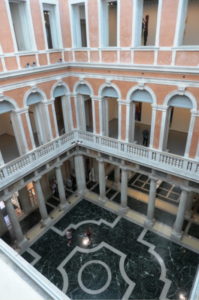
One exhibition building we were very keen to visit was the Palazzo Grassi, right on the Grand Canal. Built between 1748 and 1772, Palazzo Grassi was the last palace to be built on the Grand Canal before the fall of the Venetian Republic. In 1840, the Grassi family sold the palace, and it passed through several different hands before becoming the International Centre of Arts of Costume in 1951. In 1983, Palazzo Grassi was bought by the Fiat company and converted by the Milanese architect Gae Aulenti into a space for art and archaeology exhibitions. In 2005, the Palazzo was bought by Francois Pinault, whose Bourse de Commerce, in Paris, recently opened to great fanfare. Both the Bourse and Palazzo Grassi were re-configured by Japanese architect Tadao Ando. Having visited the Bourse on a trip to Paris earlier this year and been hugely impressed, Palazzo Grassi was well and truly on our Must Visit list while in Venice. The current exhibition presents ‘Marlene Dumas, open-end’, is on until January 2023.
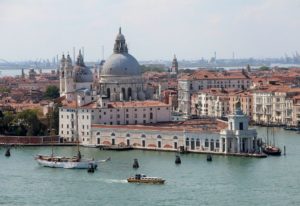
The other exhibition space now part of the Pinault group in Venice is the Punta della Dogana. Built in 1682, it’s one of Venice’s oldest Customs buildings. In a very prominent location, the triangular-shaped Dogana sits at the tip of the island of the Giudecca where the Grand Canal meets the Giudecca Canal, next door to Santa Maria della Salute. It had been closed for decades, with failed plans to turn it into apartments or a hotel, and was in fairly poor condition. Restored and converted by Tado Ando in 2008 and re-opened in 2009, the works funded by Francois Pinault who had signed a 33 year lease agreement with the city.
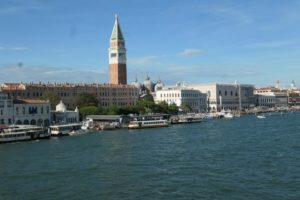
Aside from the contemporary art installations exhibited throughout 5,000 sq.m. of exhibition spaces, one of the best things about the Dogana is the fabulous views from the roof-top terrace of Venice looking across the Grand Canal to San Marco.
As well as art exhibitions, the Biennale hosted various performing arts festivals this year, including the 50th International Theatre Festival, the 16th International Festival of Contemporary Dance and the 66th International Festival of Contemporary Music. These events took place in several locations throughout the city. Most were held at various venues at the Arsenale as well as the Sala delle Colonne at the Ca’Giustinian near Piazza San Marco.
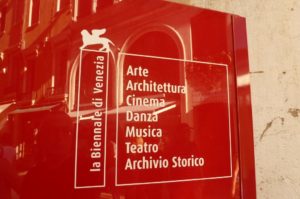
Venice always has lots of concerts on offer at any time of year, and during the Biennale months, there are even more, ranging from ‘I Virtuosi Italiani’ who perform at Santa Maria della Pietà—the Church where Vivaldi taught and performed—’I Musici Veniziani’ performing at the Scuola Grande di San Teodoro.
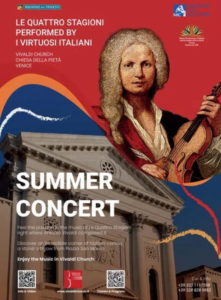
In 2013, a group of internationally acclaimed musicians created the non-profit Association Venice Music Project, originally formed to create some concert programs to celebrate Venice’s 1600th birthday, featuring Baroque music that was first performed in Venice during the 17th and 18th centuries as courtly entertainment enjoyed by the likes of Casanova and his friends. Today, this association of various groups and soloists give concerts in the Scuola Grande dei Carmini in Dorsoduro. Most concerts feature the music of Vivaldi (no surprise!). La Fenice, Venice’s magnificent opera house, had a full opera schedule throughout the year including a new production of Gounod’s Faust and had a huge success with Donizetti’s La Fille du Régiment to end their season.
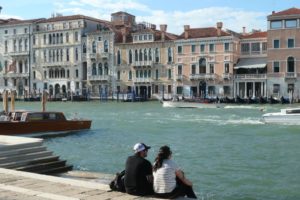
Always so much to see and do in Venice, no matter when you go, but during the Biennale, it’s a challenge to see a fraction of what you want. It’s certainly very rewarding though, and huge fun trying, despite some of the challenges and relatively minor disadvantages. Will we return for another Biennale in future? In a heartbeat!
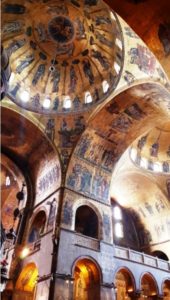


I will need to return to this site many times with so much wonderful informative
views of Venice and the artwork of the Biennale to absorb.
Loving the history for example the annual regatta storica. Since 13C amazing.
The theme ‘The milk of Dreams’ piqued my interest so will follow up on Leonora Carrington. Also will have a look at Simone Leigh’s sculptures. Happy to see so many African countries able to participate. Great photos taken throughout your visit, Ghana looks interesting. Interesting that the 3 Russian artists withdrew leaving no Russian exhibit. Artists, often the conscience of a country. Great blog Cheryl
Hi Sharon,
It doesn’t matter how many times one goes to Venice, there’s always something terrific to see, even if you’re not aware of anything special on before you arrive. I love seeing how an entire city devotes itself to the subject of art for such a long time every 2 years. Even though the city is more crowded than ever, the locals as well as visitors, seem to think it’s worthwhile. As you say, great to see the African countries participating and so well received. This year, so many of the countries were represented by women artists, and indeed, the organiser, or the “face” of this Biennale, was a woman. I recommend seeing a Biennale at least once in people’s travelling lives!